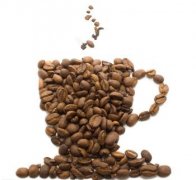Methods and principles of coffee roasting Classification and stages of fried culture

The raw coffee beans are fried to make the coffee beans show a unique coffee color, aroma and taste. The most important thing of frying and baking is to be able to stir-fry the inside and outside of the beans evenly without overscorching. 80% of the taste of coffee depends on roasting, which is the most important and basic condition for making good coffee.
The basic principles of ● Fried Culture
The most important thing is to be able to stir-fry the inside and outside of the beans evenly. First of all, the moisture in the beans will be discharged smoothly through firepower. If this step is too hasty, it will be spotted, and the taste will be astringent and choking.
80% of the taste of coffee depends on fried culture, so fried culture is an important procedure for brewing good coffee.
If the technology of fried culture is good, the beans will be big and swollen, there are no wrinkles on the surface, and the light is said to have different flavors. Frying coffee beans to the maximum limit is the ultimate goal of fried culture.
Classification and stage of ● Fried Culture
The roasting of coffee beans can be divided into three categories: light fire, medium fire and strong fire, and these three kinds of roasting can be subdivided into 8 stages, as shown in the table.
The frying stage features the preferences of various countries in three stages.
The lightest fried culture, no fragrance and concentration of Light are light for test.
Cinnamon for the general popular degree of fried culture, leaving a strong sour taste. The cinnamon color of beans is preferred by people in the western United States.
Medium fried culture of Medial. Mellow, sour and delicious are mainly used in mixed coffee.
High tastes sour and bitter. It is suitable for coffee such as Blue Mountain and moving Mazaro for Japanese and Nordic people to like moderate (micro-deep)
City is more bitter than sour, and coffee suitable for Colombia and Brazil is moderate (deep) in New York.

Full city is suitable for making iced coffee. Non-sour, bitterness is mainly used in iced coffee, but also for people in Central and South America to drink micro-depth

French bitterness is strong, French baking method, slightly black color for steam pressurized coffee depth (French)

Italian black, surface oiled, Italian baking Italian steam pressurized coffee for heavy depth (Italian)
Important Notice :
前街咖啡 FrontStreet Coffee has moved to new addredd:
FrontStreet Coffee Address: 315,Donghua East Road,GuangZhou
Tel:020 38364473
- Prev

Coffee roasting degree cinnamon roasting
Cinnamon Roast: cinnamon baking: this is the lightest kind of baking. There is no oil on the surface of the coffee beans. Large coffee bean manufacturers often mix the lightly roasted coffee beans with the coffee beans they sell. Because it can save money and increase the quantity. Cinnamon-roasted coffee beans usually do not appear in urban baking City Roast: the name of urban baking.
- Next

According to the degree of frying, the aroma of coffee can be subdivided into 8 stages.
Frying determines the aroma of coffee to fry raw coffee beans, which can show the unique color, taste and aroma of coffee. 80% of the taste of coffee is determined by frying, so the quality of coffee also depends on frying technology. Through frying, we can turn the light green raw coffee beans into the familiar tea-brown coffee beans. If fried well, the coffee beans will have a lot of aroma, sour taste and
Related
- Beginners will see the "Coffee pull flower" guide!
- What is the difference between ice blog purified milk and ordinary milk coffee?
- Why is the Philippines the largest producer of crops in Liberia?
- For coffee extraction, should the fine powder be retained?
- How does extracted espresso fill pressed powder? How much strength does it take to press the powder?
- How to make jasmine cold extract coffee? Is the jasmine + latte good?
- Will this little toy really make the coffee taste better? How does Lily Drip affect coffee extraction?
- Will the action of slapping the filter cup also affect coffee extraction?
- What's the difference between powder-to-water ratio and powder-to-liquid ratio?
- What is the Ethiopian local species? What does it have to do with Heirloom native species?

